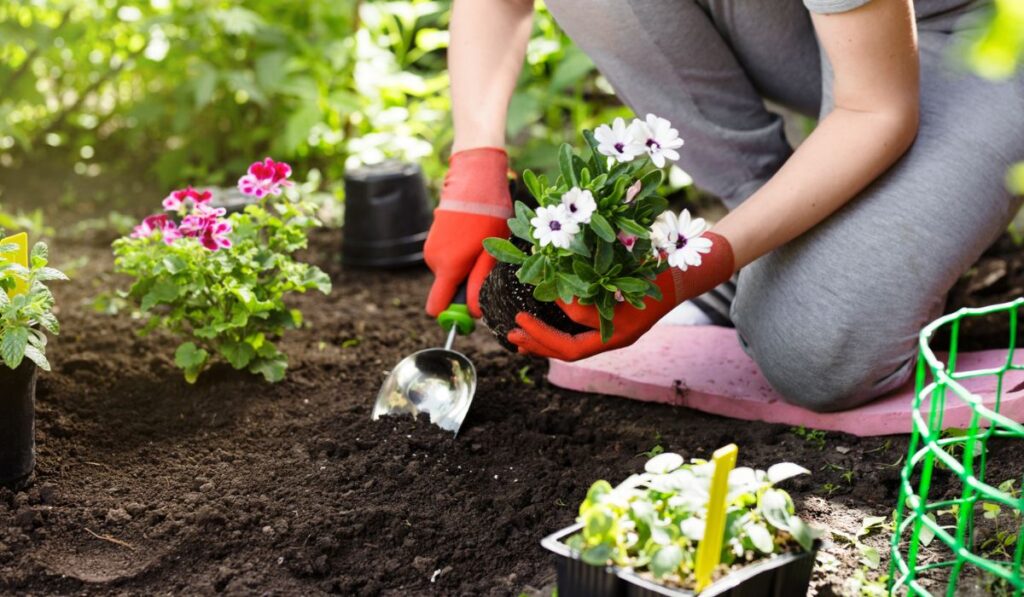When should flowers be planted in a garden? There’s a perfect time of year to grow each of your favorite garden kinds. Certain flowers thrive in colder areas, while others require sunlight to flourish in hotter regions.
There is a specific time for planting perennials vs. annuals, and every plant is unique. During the winter, plan your spring and summer planting goals, so that you can set the schedule on when you want plants blooming, not just when to plant them.
This article will provide information on when to start planting flowers and everything else you need to know. Knowing when to plant seeds and bulbs is essential to beautifying your garden with flowers. So, let’s find out!
When to Plant Flowers?

Flowers can enhance your home’s curb appeal and just make your life a little more fun. However, you might think that keeping these beautiful colors given for a whole year in the garden requires high gardening knowledge levels.
That’s absolutely wrong. You can plant flowers with just a little know-how of planting. The main thing is to know the right time for the specific kind of flowers.
Flowers should be planted in areas that are less exposed to direct and intense sunshine, although the timing of planting will be based on the climate and the flower variety. Learn about the optimum time of year to plant different flowers and how planting time affects their predicted growth and durability.
Annuals Vs. Perennials
Knowing the difference between annuals and perennials is vital to choosing suitable flowers for your garden. So, let’s get started with the details!
Annuals
The best time to plant an annual depends on the type and environment of the plant. Because of their temperature tolerance, annuals can be classified as “warm-season” or “cold season” thrivers. Conversely, cool-season annuals, such as primulas, thrive when the temperature is mild, and the soil is cool.
The type of annual flower and the climate influence when to plant annual flowers. The hardiness and ability to withstand lower temperatures are the defining characteristics of an annual. Planting annuals during the Victoria Day weekend is safe because the average frost-free periods are between May 1–10.
Planting tender/tropical annuals should be put off for a few more weeks because this spring has been cooler than usual. As a result, the annuals prosper in the greenhouse, but the chilly spring evenings and the risk of frost would lead them to die off.
When the temperature is above 55°F, they can be sown. If they are exposed to frost or temperatures below 32°F, they can be badly damaged or even die. You can buy seeds for one of the most beautiful annual flowers, such as Red Petunia 500 Seeds (on Amazon).
Perennials
Spring and October are the most acceptable periods to plant perennial flowers. Planting during these seasons will ensure that your plants are vigorous and healthy. In the spring, the soil is warmer, there is more rain, and the days are longer.
In addition, planting in the fall offers its benefits. The roots of your perennials will be strengthened during the winter, allowing them to produce more flowers the following spring.
Make sure to include a few early-blooming perennials in your yard when you plan to plant perennials.
Long-blooming perennials are an excellent alternative to annuals, which bloom for only a few weeks before going dormant. At least six to ten weeks are required for long-blooming plants to produce flowers.
Adding these plants and flowers to your yard will provide a continuous splash of color throughout the summer.
Bulbs
Bulbs should be planted one or two seasons before blooming to get the best results. For example, summer-flowering bulbs must be planted in the spring, whereas autumn- and early-winter bulbs should be used for spring planting.
Because they bloom in the late summer, autumn-flowering crocus should be planted in the fall rather than the spring. In addition, you can buy seeds of unique rainbow-colored flower bulbs such as Gladiolus Flower Bulbs – Rainbow Mix (on Amazon).
As long as your bulbs have proper drainage and exposure to sunlight, you can plant them in any location. Bulbs decay if they are not adequately drained. Loamy or somewhat sandy soil offers the drainage and nutrients these plants require.
Under woody plants, early-spring bloomers can get enough sunlight to bloom before the trees’ leaves block out the sun. However, they will only bloom in the first year since the leaves need sunshine later in the season to accumulate enough energy for the following year’s flowers.
How To Plant Flowers?

Follow the guidelines below to plant flowers the right way:
- Choose the flower’s location and lighting conditions. Check the label on the packet of seeds to see what kind of sunlight the flower prefers.
- Consider the colors and heights of the flowers around other plants to make them stand out. As a result, your set-up will have a more refined appearance.
- A water bowl or pail filled with water should be used to submerge the plant clump.
- Make a suitable hole for the planting. Soil mix into your freshly dug garden soil.
- The cultivator should be threaded through the clump’s roots to loosen them.
- Add some of the amended soil you’ve prepared, then place your perennial in the center of the hole, sure to spread the roots out as much as possible.
- Backfill with the remaining dirt carefully so as not to harm the foliage.
Keep your flowers well-hydrated. Watering near the earth is the most popular way to prevent disrupting flowers in bloom or causing soil erosion, but individual needs vary depending on humidity and plant type.
